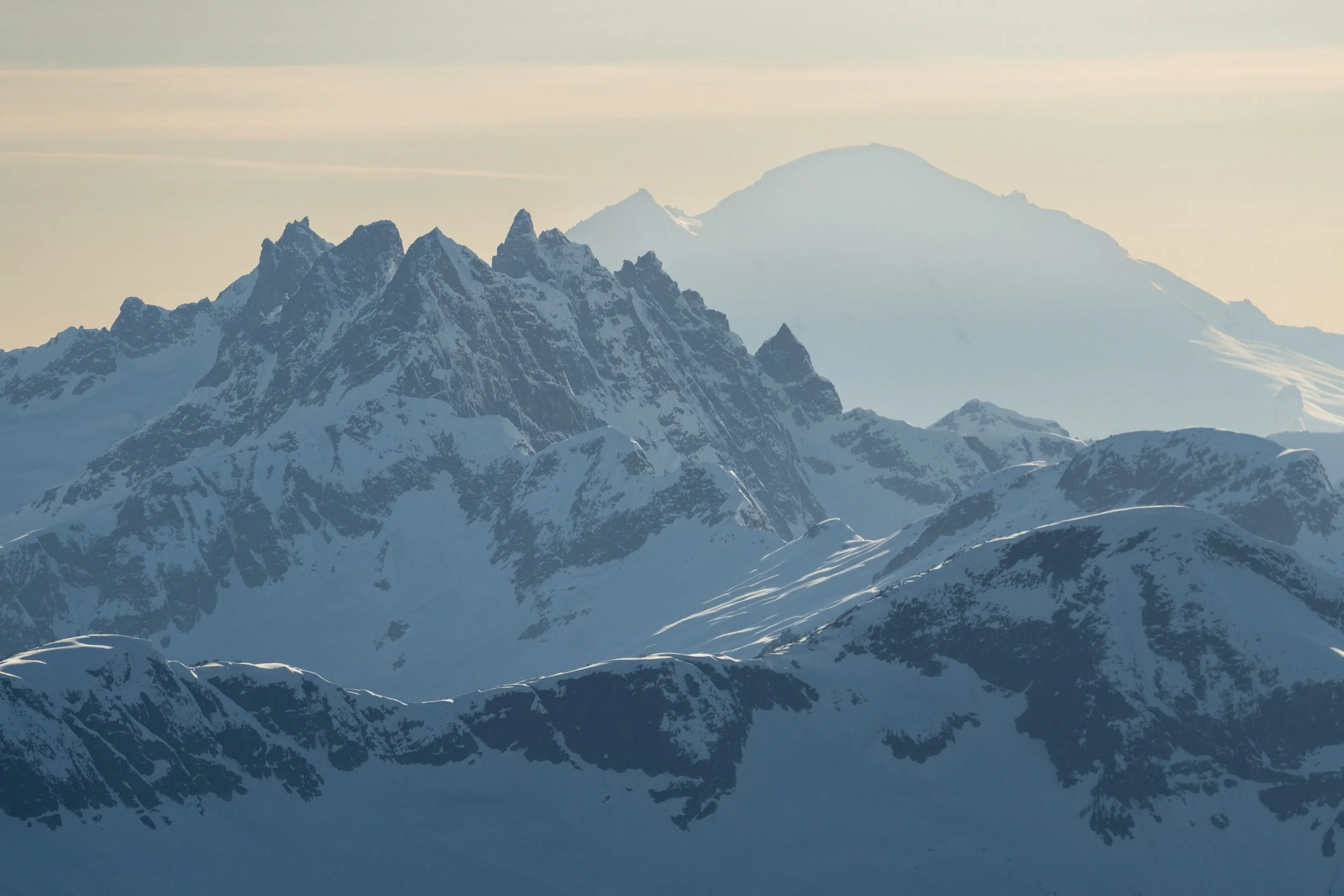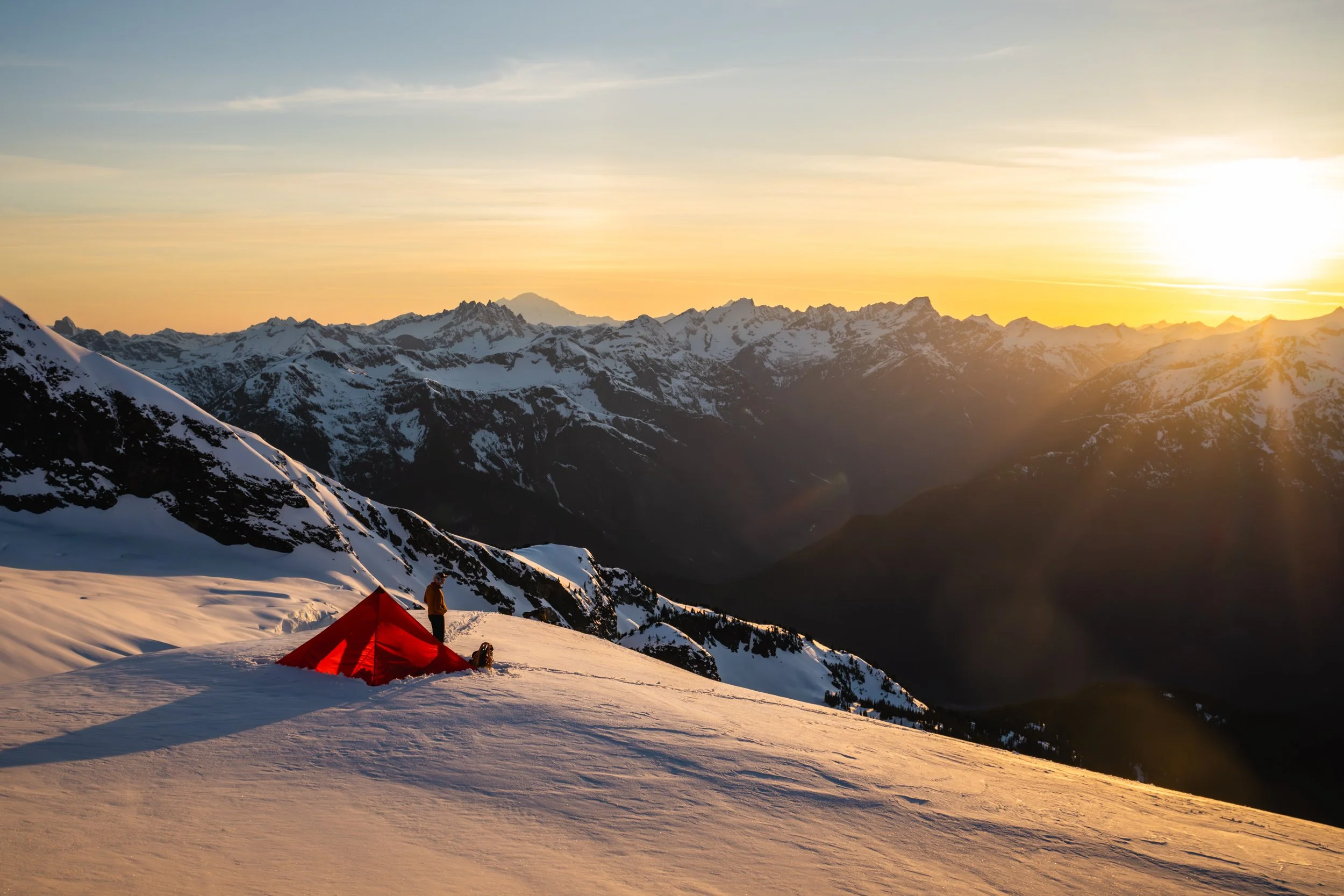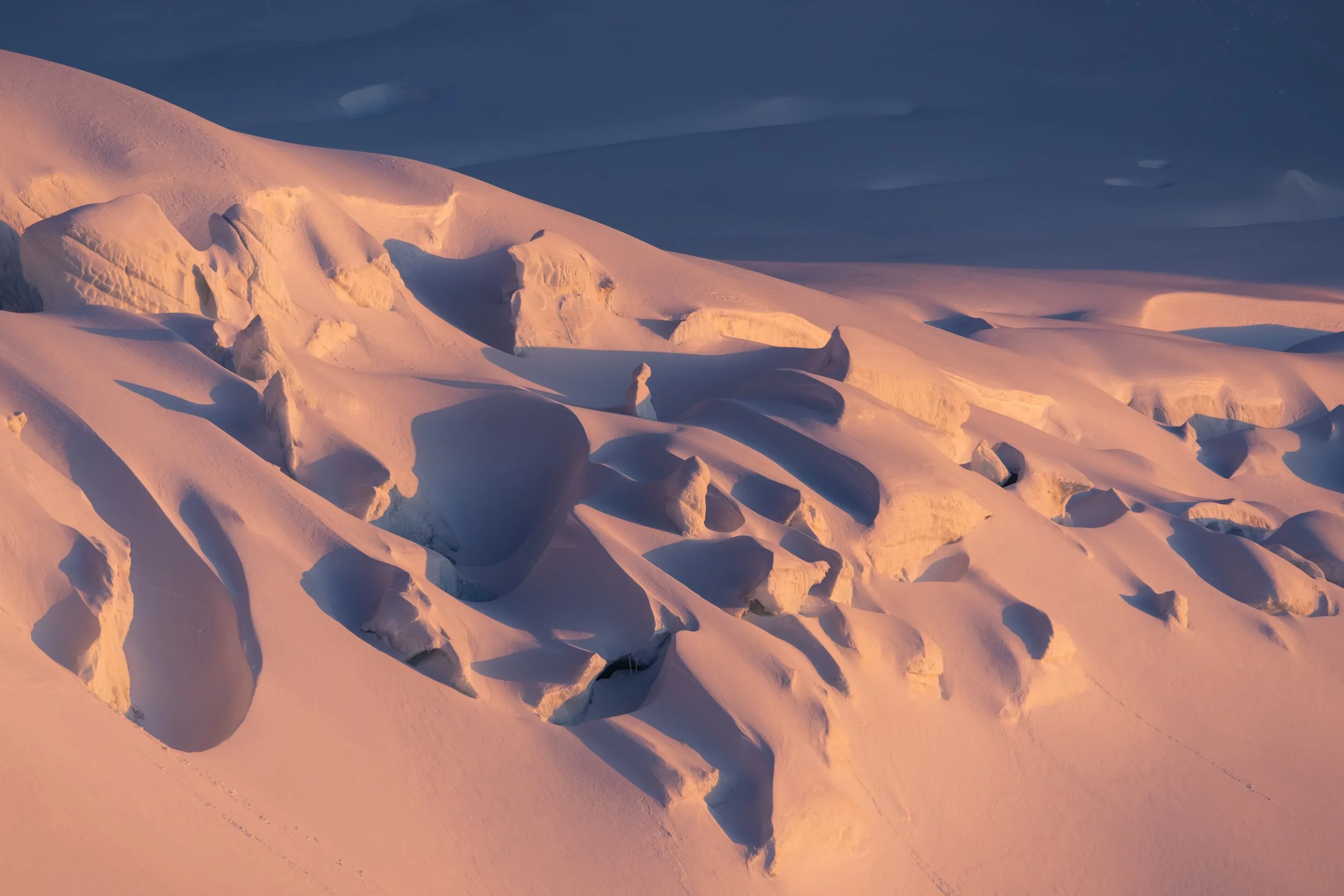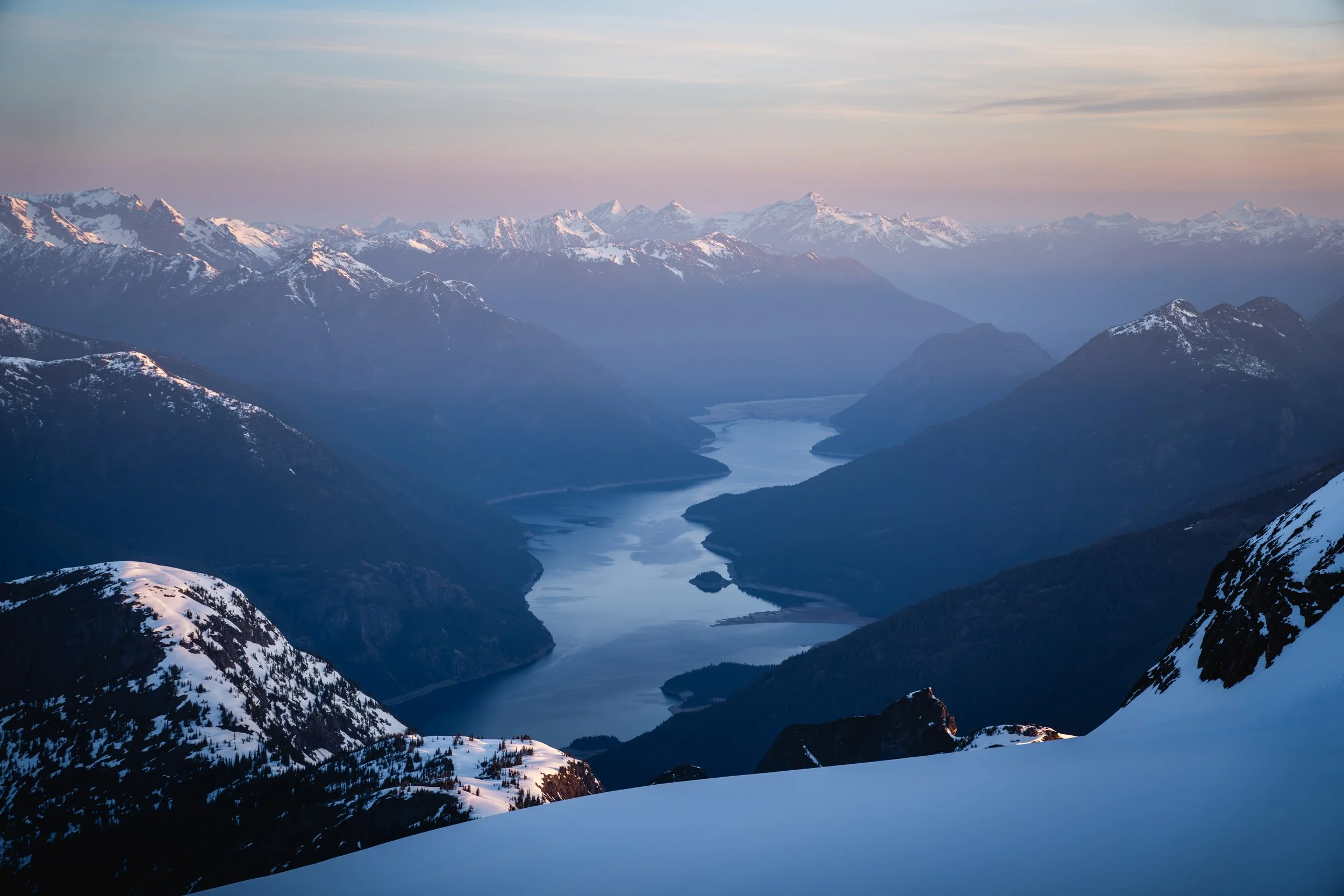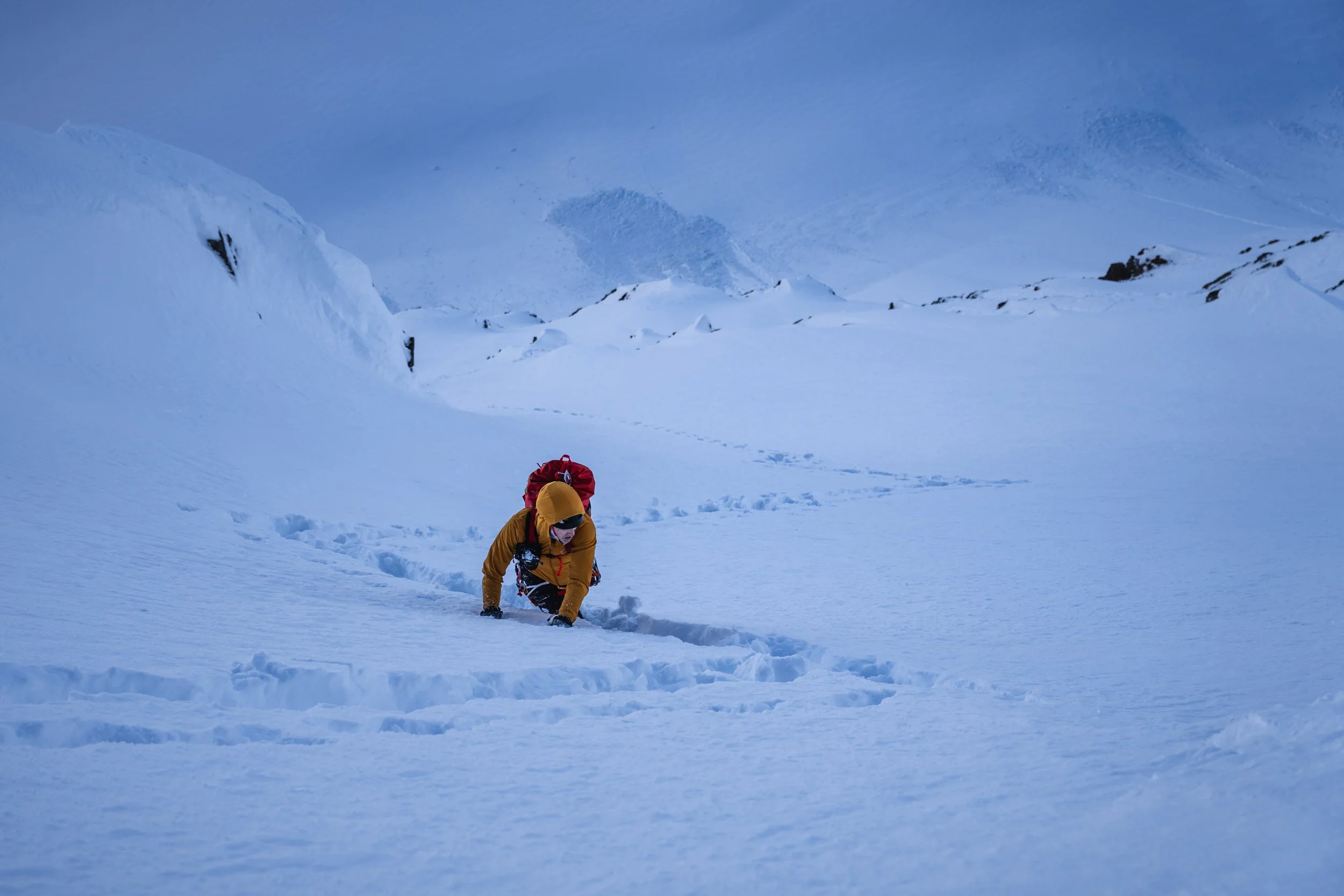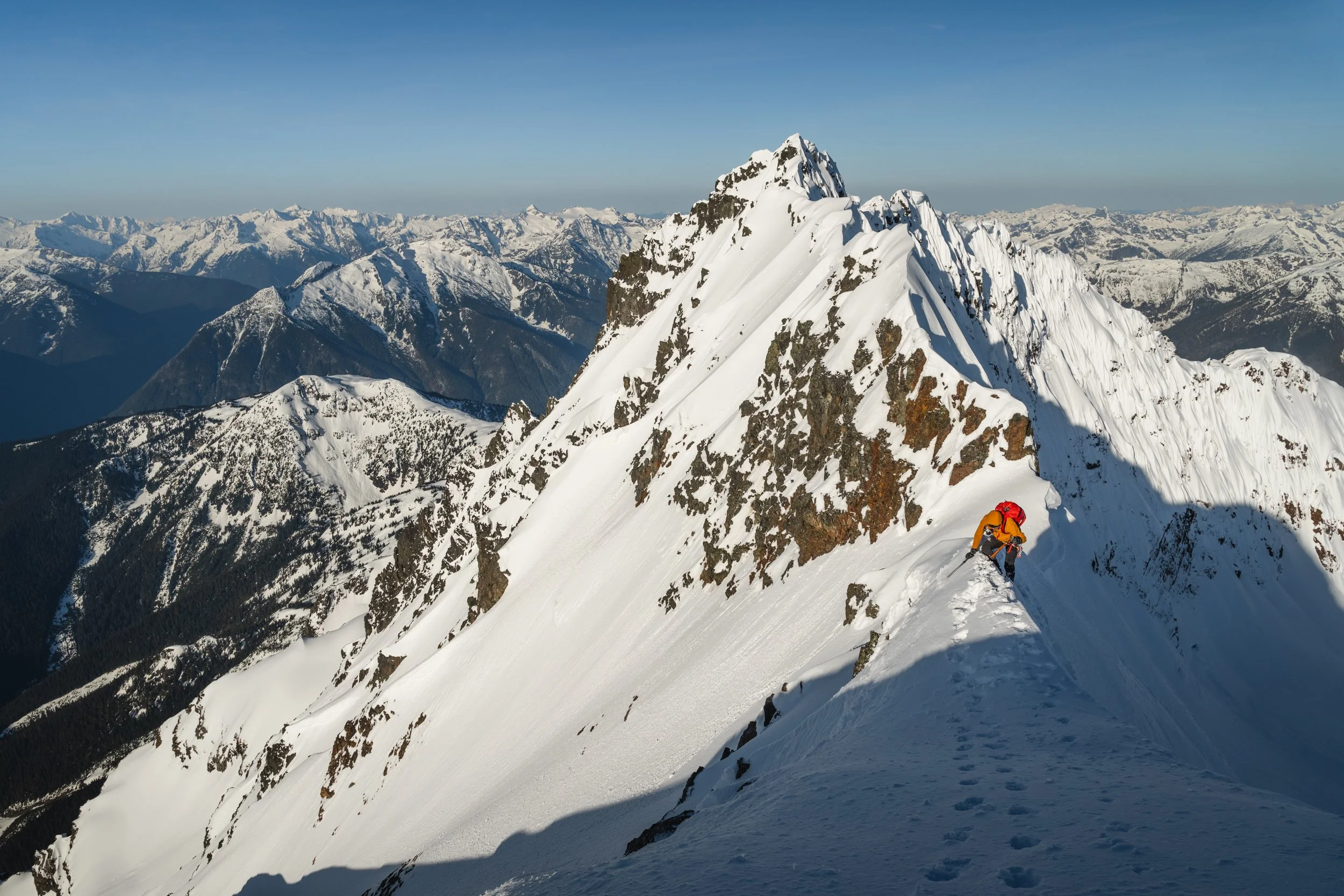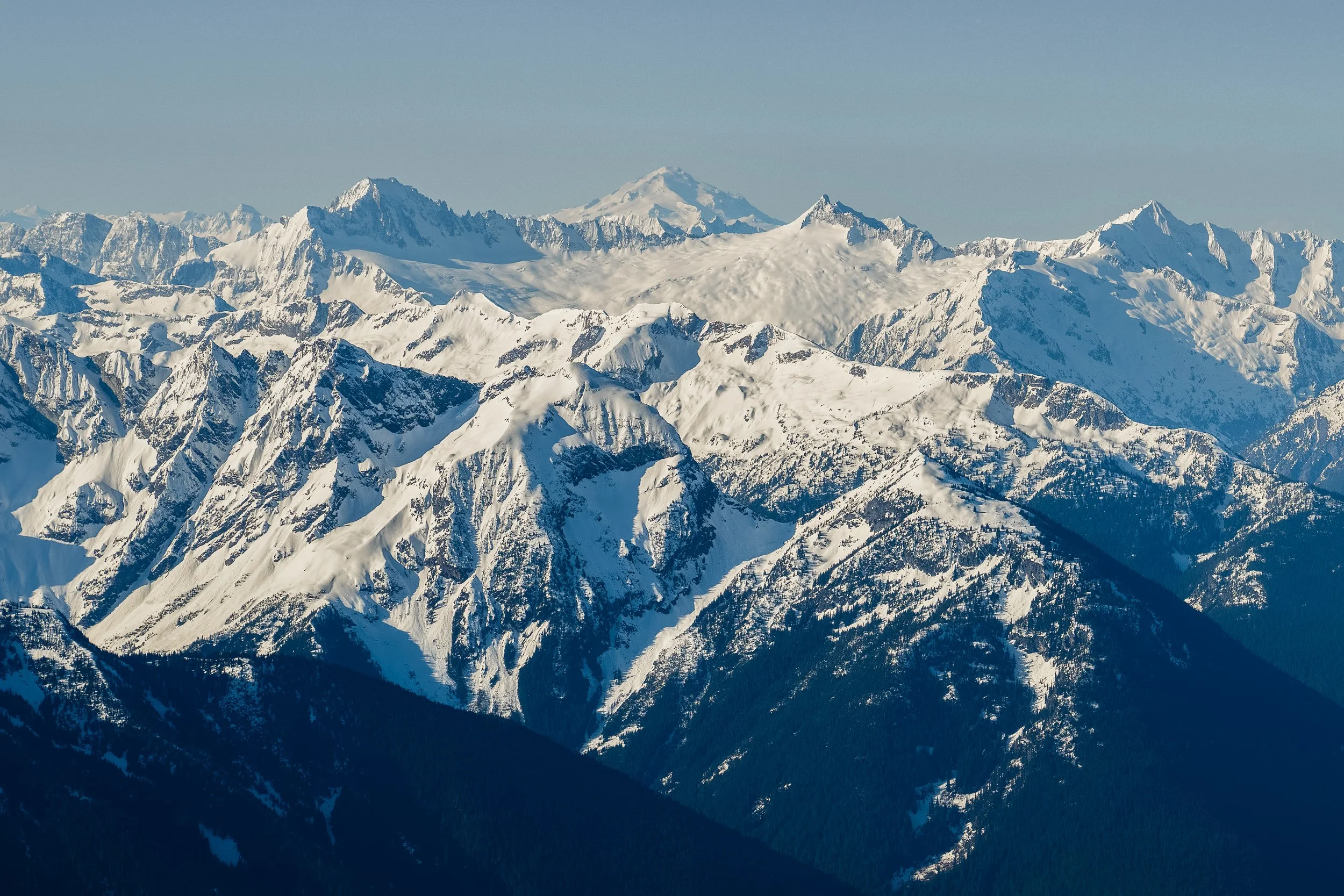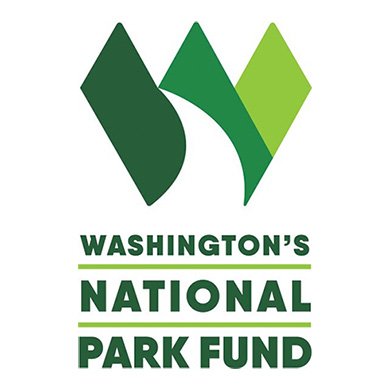Jack Mountain | WA100: Peak 69/100
#WA100Project | View All Climbs
Jack Mountain is located on the traditional lands of the Syilx (Okanagan), Confederated Tribes of the Colville Reservation, Sauk Suiattle, Nlaka’pamux, Cayuse, Umatilla and Walla Walla, among other Indigenous Peoples, past and present.
Our final steps along the summit ridge of Jack Mountain after ascending the Nohokomeen headwall.
My friend and I drove up to the North Cascades on Wednesday of last week to attempt Jack Mountain via the Nokohomeen glacier and headwall. The plan was a two-day climb from the East Bank trailhead to May Creek and to the cross-country route up to the glacier. I hadn’t heard of anyone climbing this route (nor had I seen any trip reports) from this year yet, so the condition of the headwall – and the bergschrund specifically – was a question mark in my mind.
We left the East Bank trailhead just after 6 a.m. The seven-plus miles along the East Bank trail were pleasant and uneventful. That trail is currently in great shape with no blowdowns. We started the cross-country route up from May Creek around 9 a.m. We felt the worst bushwhacking is between 3000 and 3500 feet of elevation but wasn’t horrible. A few short bouldering moves put us over the crux of the cliff band at 3500 feet. We found webbing above the crux placed by previous climbing parties.
We hit consistent snow around 4800 feet and donned snowshoes at 5000 feet near the rock ledges that provide awesome 180-degree views to the west. Ascending from the basin at 5000 feet of elevation, stunning views of the glacier unfold.
By 5 p.m. we reached the upper section of the glacier at 7400 feet of elevation where we set up our camp for the night. Damn good camp views, most notably of the upper section of Ross Lake as well as the Pickets to the west. Shortly after the last bit of alpenglow left the glacier ice and headwall, we were in the tent for the night.
After a windy night with little sleep, we were up by 3:30 a.m. and moving toward the headwall by 4:30 a.m. by headlamp and roped up.
We reached the base of the headwall by 5:15 a.m. where we dropped snowshoes, put on crampons, and pulled out our double ice tools. We stayed roped up to cross the bergschrund area only, and then we unroped shortly thereafter. For the rest of the headwall and upper ridge, we soloed the route.
The headwall snowpack was interesting: compared to imagery from past trip reports over the years, the below-average snowpack was apparent, exposing rock features that required a bit more navigation and zigzagging. Even so, the snow was variable, ranging from breakable crust, to near-bulletproof ice, to perfect neve, to powder. But it was predominantly deep sugary snow (especially on the upper half of the headwall) through which we wallowed laboriously. Kicking steps were often challenging, and we often had to opt for a diagonal line of ascent (as opposed to straight up) to create steps that would hold up and that we’d need to safely descend later that morning.
We topped out on the headwall and gained the upper ridge around 7:15 a.m. It was then that I discovered that where we gained the summit ridge was a sort of knife edge with a rocky drop off on the other (south) side. A few careful moves led us to a broader section of the ridge pointing toward the summit.
The summit ridge was awesome. While giving the north-facing cornices plenty of bearth, we enjoyed much better snow for planting ice axes/tools and kicking steps. We made quick work of it all and reached the summit at 7:45 a.m. It was a truly awesome finish leading to jaw-dropping views in every direction. Honored to share the moment with my OG climbing partner, Casey Sullivan, the friend who first put an ice ax in my hand and crampons on my boots back in 2014.
We didn’t stay long on the summit, knowing that the warming temps could jeopardize the integrity of our kicked steps on the headwall. After a few summit photos and a quick selfie, we retraced our steps down the summit ridge and then down the headwall, slowly and carefully, and got down to the base by 9:30 a.m.
The rest of the day was as uneventful as it was long. Over nine hours later, we made it back to the East Bank trailhead – with a clearer understanding of why most parties do this route in three days. But we were thrilled to have had the privilege to experience this wild corner of the North Cascades. This was an unforgettable trip for me personally, and my 69th peak of my WA100 Project (my personal Bulger project) and my 78th Bulger overall.
NONPROFIT SPOTLIGHT:
During this project, I will collaborate with local and national nonprofit groups to spread awareness, to fundraise, to highlight their mission and programs, and sometimes to join representatives of these groups in climbing. My nonprofits will include groups that serve women in the outdoors; Black, Indigenous, and People of Color climbers; LGBTQ+ adventurers, and other underserved and underrepresented group members.
Washington’s National Park Fund (WNPF) is the official philanthropic partner to Mount Rainier, North Cascades, and Olympic National Parks. WNPF raises private support to preserve and protect these parks. Through its Embracing Inclusion priority pillar, it is enabling the support of programs that promote park access by underrepresented and historically marginalized communities.
THE WA100 PROJECT
Over the 2023-24 climbing seasons, Scott Kranz is embarking on a personal journey to climb and document Washington state's 100 highest peaks. These summits are all in the Cascades, the mountain range that transformed his life. His aim behind this project is to celebrate the ways in which we connect with our local landscapes while also giving back by uplifting and supporting the outdoor community and organizations that strive for inclusivity and accessibility in outdoor spaces.
ABOUT THE AUTHOR
Scott Kranz is a full-time outdoor photographer and filmmaker based in Seattle. Born and raised in Minnesota, Scott moved to Washington State in 2013 and first explored the Cascade Range, which sparked a lifelong love of outdoor adventure and photography. Since, he’s come to partner with some of the world’s leading brands and shot on all seven continents.





